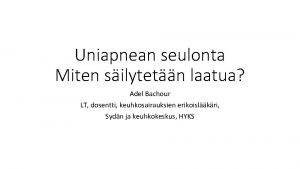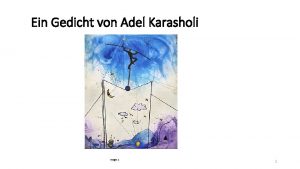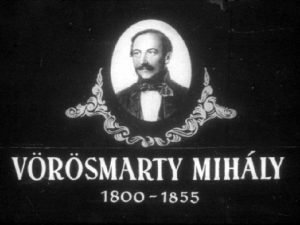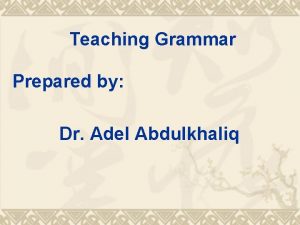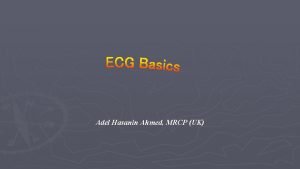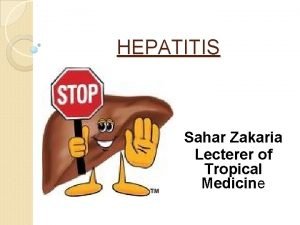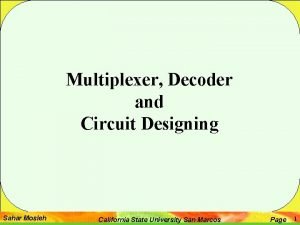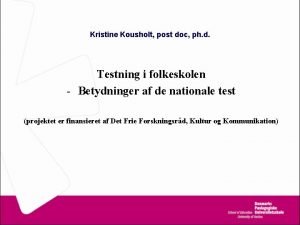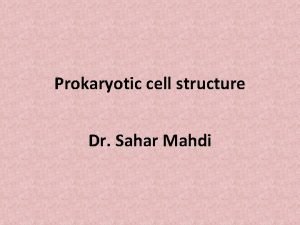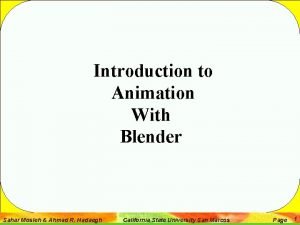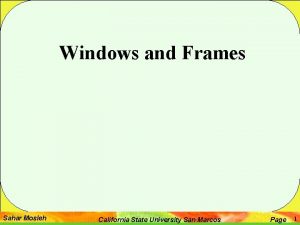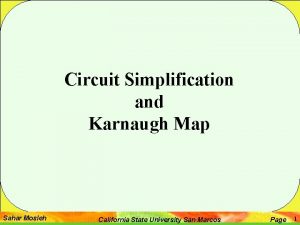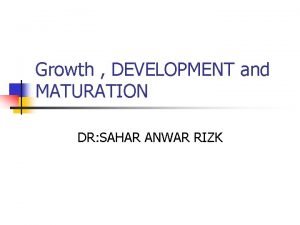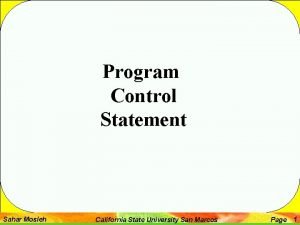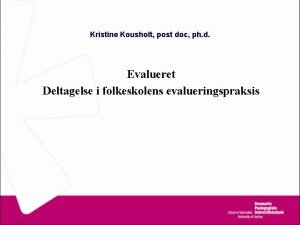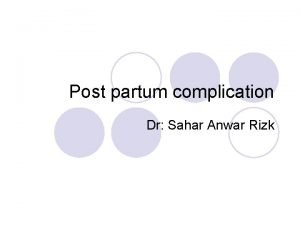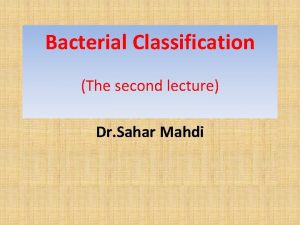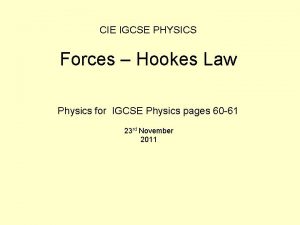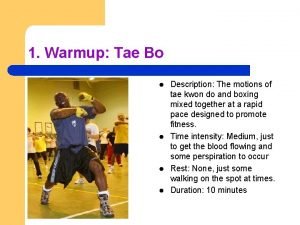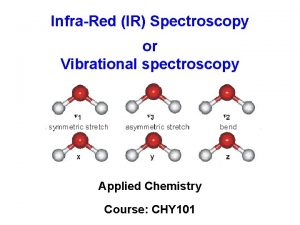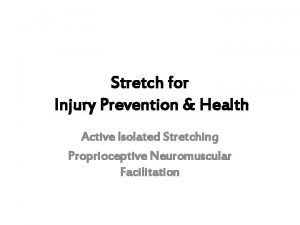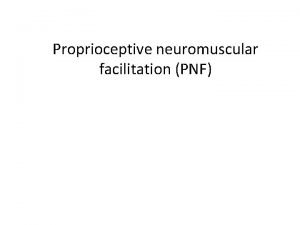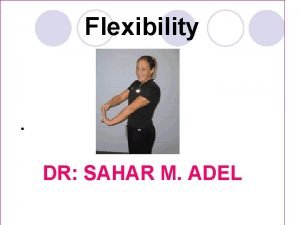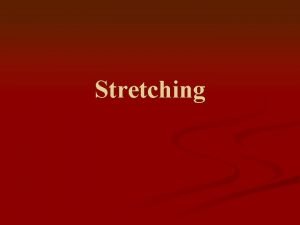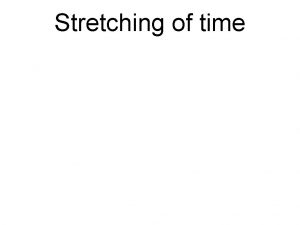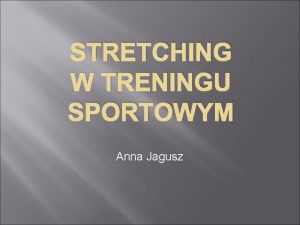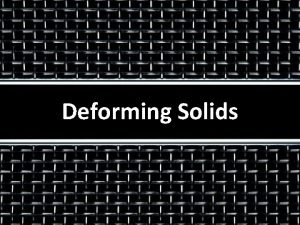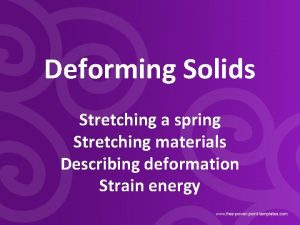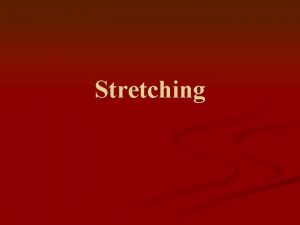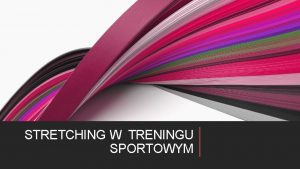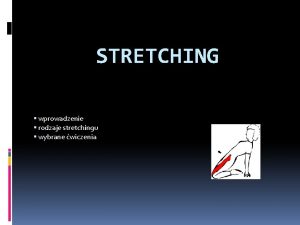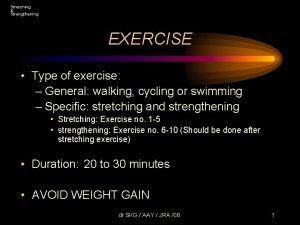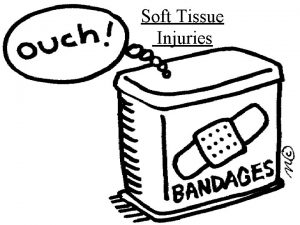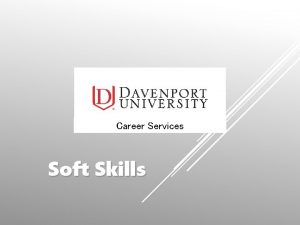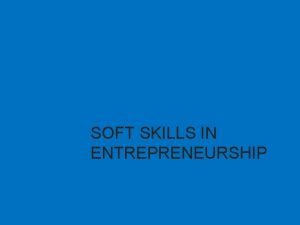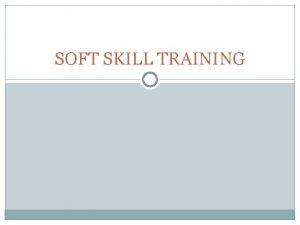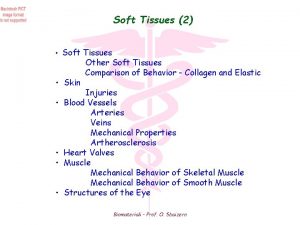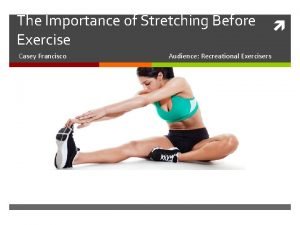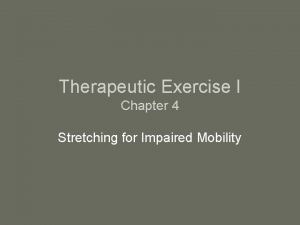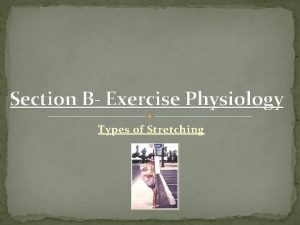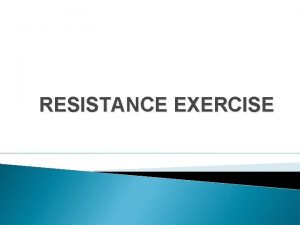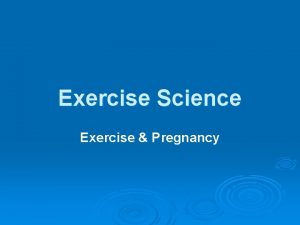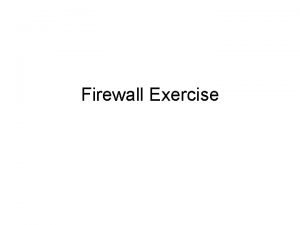STRETCHING EXERCISE Dr Sahar M Adel The soft






























- Slides: 30

STRETCHING EXERCISE Dr. Sahar M. Adel

The soft tissues that can restrict joint motion are muscles, connective tissue, and skin. Each has unique qualities that affect its extensibility, that is, its ability to elongate. When stretching procedures are applied to these soft tissues, the velocity, intensity, and duration of the stretch force will affect the response of the different types of soft tissues. Mechanical characteristic of contractile and noncontractile tissue as well as the neurophysiologic properties of contractile tissue all affect soft tissue lengthening.

Biofeedback Through visual or auditory feedback, a patient can begin to sense or feel what muscle relaxation is? Before therapist start stretching procedures. . Biofeedback is just one tool that can be useful in helping the patient learn and practice the process of relaxation. By reducing muscle tension, pain can be decreased and flexibility of muscle increased.

Joint traction oscillation Slight manual distraction of joint surfaces prior to or in conjunction with stretching techniques can be used to decrease joint pain and spasm of muscles around a joint. Mechanical stress is the internal reaction or resistance to an external load.

There are 3 kinds of stress. 1 -Tension: a tensile force that is applied perpendicular to the cross-sectional areas of the tissue in a direction away from the tissue. Tension stress is a stretching force. 2 -Compression: a compressive force that is applied perpendicular to the cross-sectional area of the tissue in a direction toward the tissue. Compression stress occurs within joints, with muscle contraction and on weight bearing when a joint is loaded. 3 -Shear: a force that is parallel to the cross-sectional area of the tissue.

Utilizes positioning as a technique to prevent or reduce deformities. : • Identifies areas susceptible to developing deformities. • Identifies the effect of abnormal tone on positioning. • Identifies areas where limited motion may be desired to improve or maintain function. • Performs tests and measurements to use for future comparison. • Plans a positioning, program to prevent or reduce deformities by considering the effects of tone and the desired function.

• Positions patient according to program planned. • Performs periodic re-evaluations to determine if the goals of positioning program accomplished are being. • Modifies program as indicated by re-evaluation. • Instructs the patient and others in the positioning programs

Indications and goals of stretching Indications 1. When range of motion is limited as a result of contractures, adhesions, and scar tissue formation, leading to shortening of muscles, connective tissue and skin. 2. When limitations might lead to structural (skeletal) deformities, otherwise preventable. 3. When contractures interfere with everyday functional extended to limit activities. 4. When there is muscle weakness and opposing tissue tightness.

Relaxation and inhibition procedures have been used for years by a variety of professionals to relieve pain, muscle tension, and associated physical and mental dysfunction's, including tension headaches, high blood pressure, and respiratory distress. Active inhibition techniques are reflex relaxation procedures that therapists use to inhibit muscle prior to lengthening.

Prior to the initiation of stretching 1. Consider the best type of stretching or alternative to stretching to increase range. 2. Explain the goals of stretching to the patient. 3. Position the patient in a comfortable and stable position that will allow the best plane of motion in which the stretching procedure can be done, the direction of stretch will be exactly opposite the direction of tightness. 4. Explain the procedure to the patient and be certain he understands that self stretching is important.

5. Free the area to be stretched of any restrictive clothing, bandages, or splints. 6. Explain to the patient that it is important that he be as relaxed as possible throughout the stretching period. 7. Employ relaxation techniques prior to stretching. 8. Apply heat to the soft tissues to be stretched. manual stretching techniques require adequate stabilization of the patient and sufficient strength and good body mechanics of therapist.

Stretching Procedures 1. Move the extremity slowly through the free range to the point of restriction 2. Then grasp proximal and distal to the joint where motion is to occur. The grasp should be firm, but not uncomfortable to the patient. 3. Firmly stabilize the proximal segment (manually or with equipment). 4. In order to avoid joint compression during the stretching procedure, apply, very gentle. 5. Apply the stretch force in a gentle, slow, and sustained manner. Take the joint to the point of tightness and then move just beyond. 6. the force must be enough to place tension on the softtissue structures, but not so great so to cause pain or injure the structures.

Rules: - Patient may feel tension in muscle but No pain. - Steady movement. But No bouncing - Patient breath normally No holding - Determination of stretching types according to each case. - Explanation of goals and procedures of stretching - Comfortable positions to gain full ROM

Types of stretching exercise: -Active stretch. -Passive stretch. . self-stretch

Types of stretching l-Ballistic Stretching Ballistic stretching uses the momentum of a moving body or a limb in an attempt to force it beyond its normal range of motion. This is stretching, or "warming up", by bouncing into (or out of) a stretched position, Ballistic stretching is a high-intensity, very short-during "bouncing" stretch. It is an inappropriate way to stretch muscle. 2 -Dynamic Stretching Involves moving parts of your body and gradually increasing reach, speed of movement, or both. Dynamic stretching consists of controlled leg and arm swings that take you (gently!) to the limits of your range of motion. Dynamic stretching exercises should be performed in sets of 8 -12 repetitions.

3 -Active Stretching Active stretching is also referred to as static-active stretching. An active stretch is one where you assume a position and then hold it there with no assistance other than using the strength of your agonist muscles, ( Reciprocal Inhibition). Active stretches are usually quite difficult to hold and maintain for more than 10 seconds and rarely need to be held any longer than 15 seconds. 4 -Static Stretching A static stretch is one where you assume a position and hold it with some other part of your body, or with the assistance of a partner or some other apparatus. For example, bringing your leg up high and then holding it there with your hand. Slow, relaxed stretching is useful in relieving spasms in muscles that are healing after an injury.

5 -Passive Stretching Many people use the term "passive stretching" and "static stretching" interchangeably. Passive stretching consists of a relaxed person who is relaxed (passive) while some external force (either a person or an apparatus) brings the joint through its range of motion.

6 -Isometric Stretching Isometric stretching is a type of static stretching (meaning it does not use motion) which involves the resistance of muscle groups through isometric contractions (tensing) of the stretched An example of using a partner to provide resistance would be having a partner hold your leg up high (and keep it there) while you attempt to force your leg back down to the ground.

The proper way to perform an isometric stretch is as follows: 1. Assume the position of a passive stretch for the desired muscle. 2. Next tense the stretched muscle for 7 -15 seconds (resisting against some force that will not move, like the floor or a partner). 3. Finally, relax the muscle for at least 20 seconds.

PNF Stretching PNF proprioceptive neuromuscular facilitation. stretching is currently the fastest and most effective way known to increase static-passive flexibility. It is not really a type of stretching but is a technique of combining passive stretching and isometric stretching. PNF refers to any of several post-isometric relaxation stretching techniques in which a muscle group is passively stretched, then contracts isometrically against resistance while in the stretched position, and then is passively stretched again through the resulting increased range of motion. PNF stretching usually employs the use of a partner to provide resistance against the isometric contraction and then later to passively take the joint through its increased range of motion. It may be performed, however, without a partner, although it is usually more effective with a partner's assistance.

The isometric contraction of the stretched muscle accomplishes several things: 1. It helps to train the stretch receptors of the muscle spindle to immediately accommodate a greater muscle length. 2. The intense muscle contraction, and the fact that it is maintained for a period of time, serves to fatigue many of the fast-twitch fibers of the contracting muscles 3. The tension generated by the contraction activates the golgi tendon organ, which inhibits contraction of the muscle via the lengthening reaction).

Active inhibition techniques-procedures for application 1 - Contract-relax (hold relax) _, a. Procedure: 1. Start with the tight muscle in a‘ comfortably lengthened position. 2. Ask the patient to isometrically contract the tight muscle against substantial resistance for 5 to 10 seconds, until the muscle begins to fatigue. 3. Then have the patient voluntarily relax. 4. The therapist then lengthens the muscle by passively moving the extremity through the gained range. 5. Repeat the entire procedure after several seconds of rest.

Contract relax-contract (hold-relax-contract) After the patient relaxes the tight muscle, have the patient perform a concentric contraction of the muscle opposite the tight muscle. The patient actively moves his own extremity through the increased range.

Agonist contraction. Procedure (1) Passively lengthen the tight muscle to a comfortable position. (2)Have the patient perform a dynamic (shortening) contraction of the muscle opposite the tight muscle. 3. Apply mild resistance to the contracting muscle, but allow joint movement to occur. 4. The tight muscle will relax as the result of reciprocal inhibition as joint movement occurs

Manual passive stretching a. The therapist applies the external force and controls the direction, speed, intensity, and duration of the stretch of the soft tissues that have caused the contracture and restriction of joint motion. b. Passive stretching takes the structures beyond the free range of motion. Passive range of motion is applied only within the unrestricted available range. c. The patient must be as relaxed as possible during passive stretching.

d. The stretch force is usually applied for at least 30 seconds and repeated several times in an exercise session. Manual passive stretching is generally considered to be a short-duration stretch. e. A slow, maintained stretch is less likely to facilitate the stretch reflex and increase tension in the muscle being lengthened. This is sometimes called a static stretch

Prolonged mechanical passive stretching 1. A low-intensity external force (5 to 15 Ib) is applied to shortened tissues over a prolonged period of time with mechanical equipment. 2. The prolonged stretch may be maintained for 20 to 3 D minutes or as long as several hours. 3. When noncontractile connective tissues are stretched with a low-intensity prolonged stretch force, plastic deformation occurs and the length of the tissue increases.

Precautions for stretching 1. Do not passively force a joint beyond its normal range of motion. Remember, normal range of motion varies among normal individuals. 2. Newly united fractures should be protected by stabilization between the fracture site and the joint where the motion takes place. 3. Use extra caution in patients with known or suspected osteoporosis due to disease, prolonged bed rest, age, and prolonged use of steroids. 4. Avoid vigorous stretching of muscles and connective tissues that have been immobilized over a long period of time.

5. Strengthening exercises should be added to a stretching program at some point so that a patient will be able to develop an appropriate balance between flexibility and strength 6. If a patient experiences joint pain or muscle soreness lasting more than 24 hours, too much force has been used during stretching. 7. Avoid stretching edematous tissue, as it is more susceptible to injury than normal tissue. 8. Avoid overstretching weak muscles, particularly those that support body structures in relation to gravity.

Contraindications to stretching 1. When a bony block limits joint motion. 2. After a recent fracture. 3. Whenever there is evidence of an acute inflammatory or infectious process. 4. Whenever there is sharp, acute pain with joint movement or muscle elongation. 5. When a hematoma or other indication of tissue trauma is observed. 6. When contractures or shortened soft tissues are the basis for increased functional abilities, .
 Yöpolygrafia tulokset
Yöpolygrafia tulokset Adel clerus derde stand
Adel clerus derde stand Adel nadjaran toosi
Adel nadjaran toosi Adel
Adel Seiltanz adel karasholi
Seiltanz adel karasholi Perczel adél
Perczel adél Examples of inductive method
Examples of inductive method Dr adel ibrahim
Dr adel ibrahim Sahar zia
Sahar zia Sahar mosleh
Sahar mosleh Stop sign
Stop sign Sahar mosleh
Sahar mosleh Sahar anwar
Sahar anwar Fundabac filter
Fundabac filter Light linking blender
Light linking blender Sahar mahdi
Sahar mahdi Opac.library.uol.edu.pk 8080
Opac.library.uol.edu.pk 8080 Sahar mosleh
Sahar mosleh Sahar mahdi
Sahar mahdi Sahar mosleh
Sahar mosleh Sahar mahdi
Sahar mahdi Maturation development
Maturation development Sahar mosleh
Sahar mosleh Kristine kousholt
Kristine kousholt Bimanual compression
Bimanual compression Sahar mahdi
Sahar mahdi State hooke's law igcse
State hooke's law igcse Tae bo stretching
Tae bo stretching Stretching and bending vibrations in ir spectroscopy
Stretching and bending vibrations in ir spectroscopy Active isolated stretching wharton
Active isolated stretching wharton Pnf stretching pdf
Pnf stretching pdf
